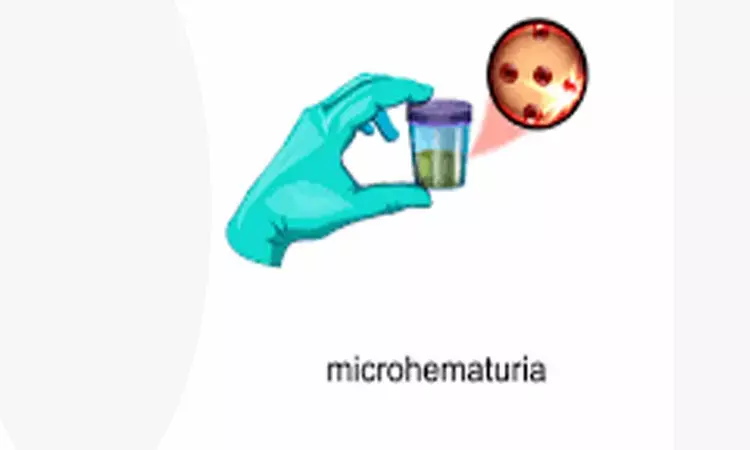- Home
- Medical news & Guidelines
- Anesthesiology
- Cardiology and CTVS
- Critical Care
- Dentistry
- Dermatology
- Diabetes and Endocrinology
- ENT
- Gastroenterology
- Medicine
- Nephrology
- Neurology
- Obstretics-Gynaecology
- Oncology
- Ophthalmology
- Orthopaedics
- Pediatrics-Neonatology
- Psychiatry
- Pulmonology
- Radiology
- Surgery
- Urology
- Laboratory Medicine
- Diet
- Nursing
- Paramedical
- Physiotherapy
- Health news
- Fact Check
- Bone Health Fact Check
- Brain Health Fact Check
- Cancer Related Fact Check
- Child Care Fact Check
- Dental and oral health fact check
- Diabetes and metabolic health fact check
- Diet and Nutrition Fact Check
- Eye and ENT Care Fact Check
- Fitness fact check
- Gut health fact check
- Heart health fact check
- Kidney health fact check
- Medical education fact check
- Men's health fact check
- Respiratory fact check
- Skin and hair care fact check
- Vaccine and Immunization fact check
- Women's health fact check
- AYUSH
- State News
- Andaman and Nicobar Islands
- Andhra Pradesh
- Arunachal Pradesh
- Assam
- Bihar
- Chandigarh
- Chattisgarh
- Dadra and Nagar Haveli
- Daman and Diu
- Delhi
- Goa
- Gujarat
- Haryana
- Himachal Pradesh
- Jammu & Kashmir
- Jharkhand
- Karnataka
- Kerala
- Ladakh
- Lakshadweep
- Madhya Pradesh
- Maharashtra
- Manipur
- Meghalaya
- Mizoram
- Nagaland
- Odisha
- Puducherry
- Punjab
- Rajasthan
- Sikkim
- Tamil Nadu
- Telangana
- Tripura
- Uttar Pradesh
- Uttrakhand
- West Bengal
- Medical Education
- Industry
Management of microhematuria: AUA/SUFU guidelines

The American Urological Association (AUA), in partnership with the Society of Urodynamics, Female Pelvic Medicine & Urogenital Reconstruction (SUFU), released a new clinical guideline for the diagnosis, evaluation, and follow-up of microhematuria.
The purpose of this guideline is to provide a clinical framework for the diagnosis, evaluation, and follow-up of microhematuria (MH).
Microhematuria should not be diagnosed solely based on a positive urine dipstick test.. Instead, a positive test should lead to formal microscopic evaluation of the urine.
Microscopic hematuria is diagnosed when 3 or more red blood cells per high-power field in a urine specimen are visible under a microscope. It may indicate a number of conditions, such as urinary tract infection, kidney stones, or, more serious, bladder cancer. As many as 1 in 5 urology evaluations involve hematuria. Only 2 to 3 individuals out of 100 will have cancer.
"The goal of the new guideline is to provide a risk-stratified approach to hematuria evaluation based on the patient's risk factors for urinary tract cancer," Daniel Barocas, co-chair of the panel that developed the guideline and Associate Professor of Urology at Vanderbilt University in Nashville, Tennessee, stated in an AUA news release. "We crafted the guideline with the intention of reducing the intensity of evaluation in those at low risk for malignancy, while preserving the diagnostic sensitivity of evaluation in those at higher risk."
After making a diagnosis, clinicians should categorize a patient as low-, intermediate- or high-risk for genitourinary malignancy and determine next steps along with the patient.
The guideline includes 22 new recommendations. The AUA highlighted 3:
Clinicians should not define microhematuria by a positive dipstick test alone. Formal microscopic evaluation of the urine is necessary.
During the initial evaluation of microhematuria, clinicians should consider such factors as genitourinary malignancy, medical renal disease, gynecologic and non-malignant genitourinary as potential causes.
After evaluation, clinicians should categorize patients based on risk to determine next steps, including repeating urinalysis, cystoscopy, renal ultrasound or axial imaging (eg, CT urogram).
Following the initial evaluation, patients should be stratified based on risk for genitourinary malignancy to determine a course of action.
The full guideline is available online at www.auanet.org/guidelines.
Dr Kamal Kant Kohli-MBBS, DTCD- a chest specialist with more than 30 years of practice and a flair for writing clinical articles, Dr Kamal Kant Kohli joined Medical Dialogues as a Chief Editor of Medical News. Besides writing articles, as an editor, he proofreads and verifies all the medical content published on Medical Dialogues including those coming from journals, studies,medical conferences,guidelines etc. Email: drkohli@medicaldialogues.in. Contact no. 011-43720751


